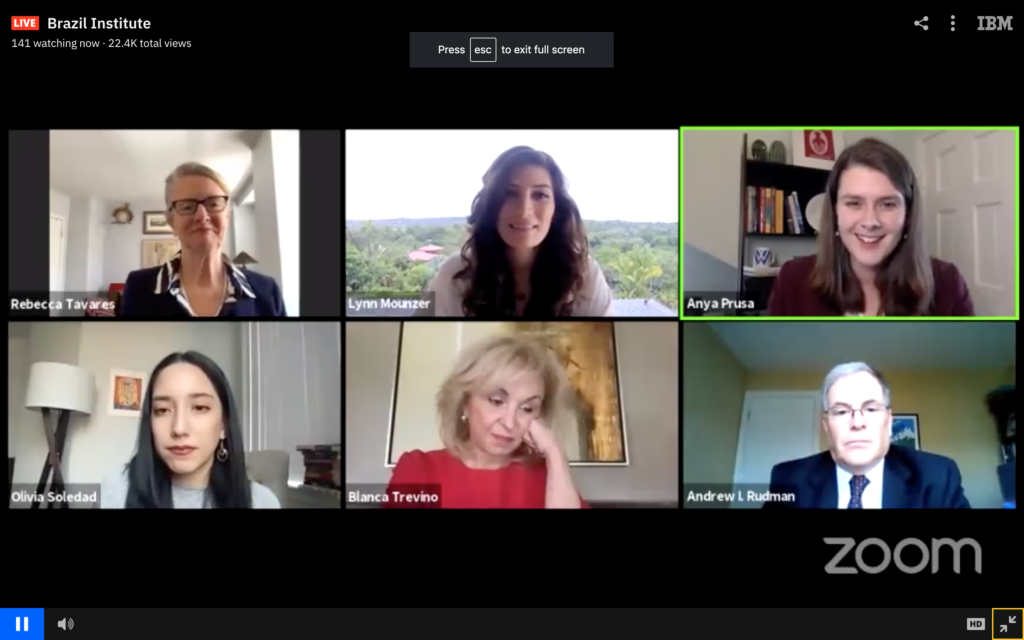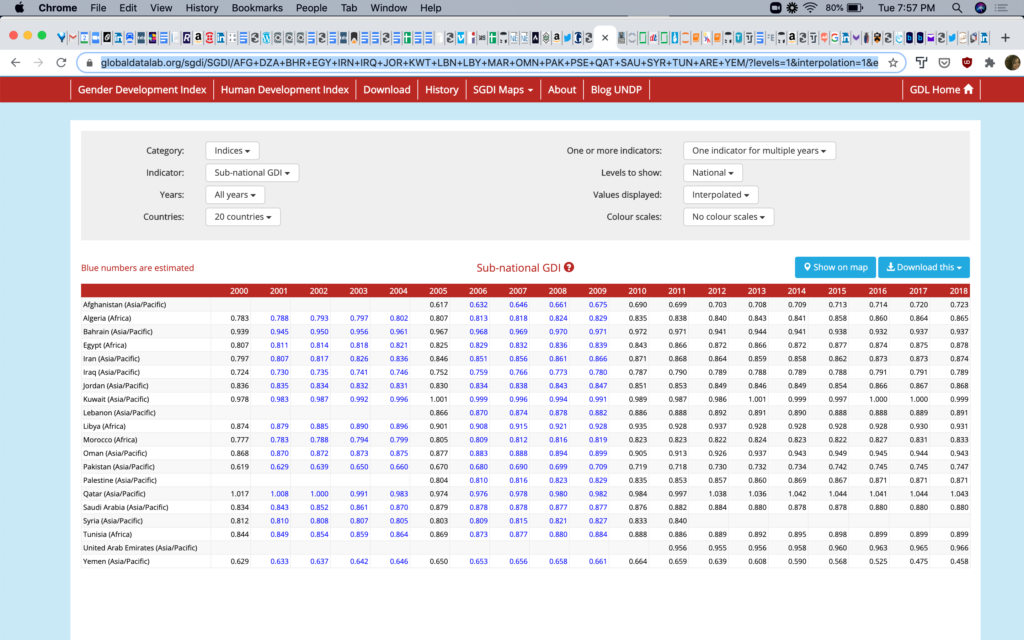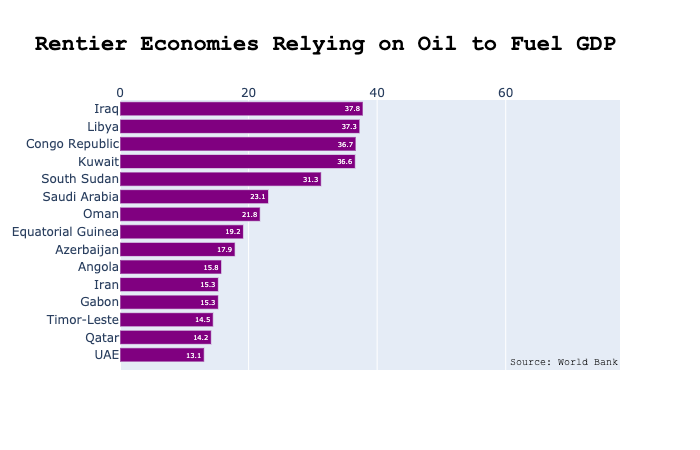“Unless someone like you cares a whole awful lot, nothing is going to get better. It’s not.” ~the Lorax
Given that World Water Day (March 22nd) noted that the @UN predicts that seven MENA/ SWANA (Southwest Asia & North Africa) countries will be water-scarce by 2025, water access has morphed into a water security challenge. Currently, Egypt, Ethiopia, Iran, Libya, Morocco, Oman and Syria represent this water scarce cohort, but by the year 2037, 18 of the water-scarce countries will come from the broader SWANA region, such as Pakistan and Iraq. The Middle East Institute convened environmental scholars on the region who pointed out the following:
- What’s pertinent for us today is how climate change is acting as an overlay to the issues that already exist – that is exacerbating the issues that are already there. – Mohammed Mahmoud
- The GERD is what everyone is talking about at the moment, but everyone is talking about it because so far – after a decade of negotiations – there has not been an agreement. -Mirette F. Mabrouk @mmabrouk
- “There is a lot of attention on desalination, and rainfall calculations… but enhancing the water distribution networks that already exist is not always a top priority.” – Lama El Hatow
El Hatow’s last point directs us towards the infrastructure management solutions, which are not as capital intensive as the technology solutions, like desalination and hydro plants. Often referred to as ‘transboundary networks’, Ramy Nouman emphasizes the need through the Egyptian-Ethiopian water sharing challenge:
“If Ethiopia’s plan to fully restore downstream flow after the fill proceeds as promised, then not only could both states’ short-term needs be met by interchanging water-derivative currencies, but the basin would have gained a tremendous new source of hydroelectricity with long-term value that never would have existed otherwise.”
Synthesizing the Water Diplomacy Framework and Sustainable Development Goals as a Rob ust Framework for TransboundaryWater Conflict Resolution” by Ramy Nouman at the 2016 International Conference on Sustainable Development
Since one day to review water security is insufficient, and water security is a daily challenge, we will use the timing of Ramadan to expand World Water Day into a month long campaign of water review and support for a call to action to cover the 30 countries in SWANA.
<iframe src=https://www.arcgis.com/apps/instant/sidebar/index.html?appid=a27cbeefad0742f492fd3c855000e027&locale=en width="400" height="600" frameborder="0" style="border:0" allowfullscreen>iFrames are not supported on this page.</iframe>First we will cover terminology. Second we will profile water stress levels. Third, we will share the interactive tool we developed visualizing the water stresses along side hydro plants. Meanwhile, each day we will profile a specific SWANA country and donate to a water organization dedicated to that country’s water stress cause.
<iframe src=https://www.arcgis.com/apps/instant/sidebar/index.html?appid=a27cbeefad0742f492fd3c855000e027&locale=en width=”400″ height=”600″ frameborder=”0″ style=”border:0″ allowfullscreen>iFrames are not supported on this page.</iframe
Water Terms
According to the World Resources Institute, water stress is, “the ratio of total withdrawals to total renewable supply in a given area“, which differs from ‘water scarcity‘ in that water scarcity specifically refers to access to safe, drinking water. ‘Water stress’ is the more general concept whereas ‘water scarcity’ is a “function of the volume of human water consumption relative to the volume of water resources in a given area“.
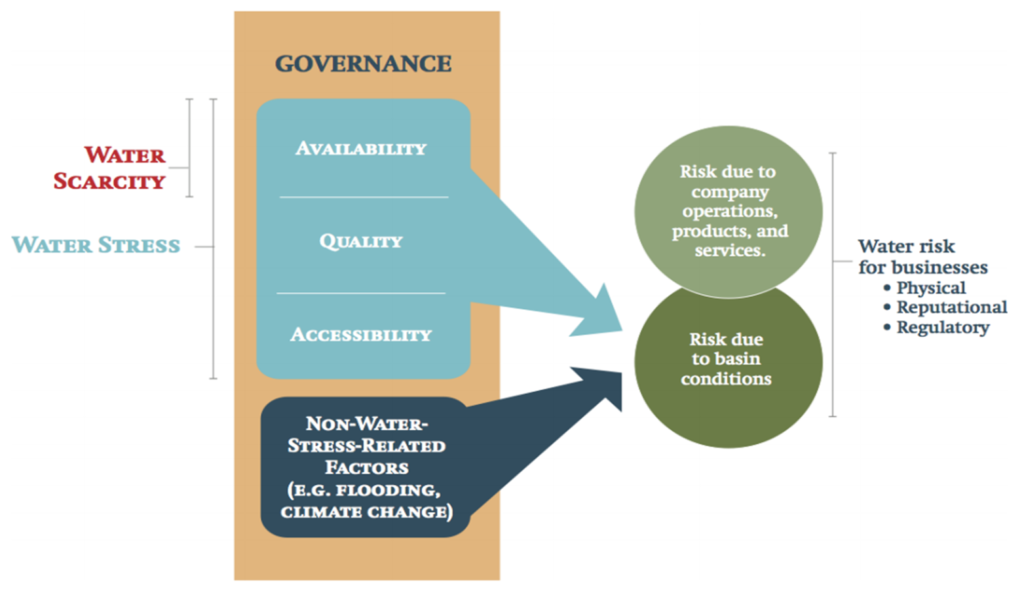
- Water Scarcity = when annual supplies drop below 1,000 cubic meters per capita.
- Unit to measure water stress is liters per capita per person per day (lpcd).
- The Falkenmark Indicator measures water availability per person, and when this indicator is less than 1,700 cubic meters per capita, a country is water-stressed.
Water Stress Profile in SWANA
- To give context of what water scarcity looks like in a country, “The per capita share of water in Egypt now ranges between 550 and 560 cubic meters per year, ” reports Al-Monitor.
- Contrast the global level of water consumption per capita, which is 784 lpcd, with 889 lpcd for the MENA region, according to the September 2022 report by UNICEF.
- Given this context: Libya has relatively high-water consumption per capita (2,392 lpcd).
- “Sudan – known as the food basket of the Middle East – is agriculturally based. So when they look at water security, they’re looking at the issue from a food security element.” – Lama El Hatow to Middle East Institute on World Water Day.

Interactive Tool: Hydro Plants Versus Water Rankings of Countries
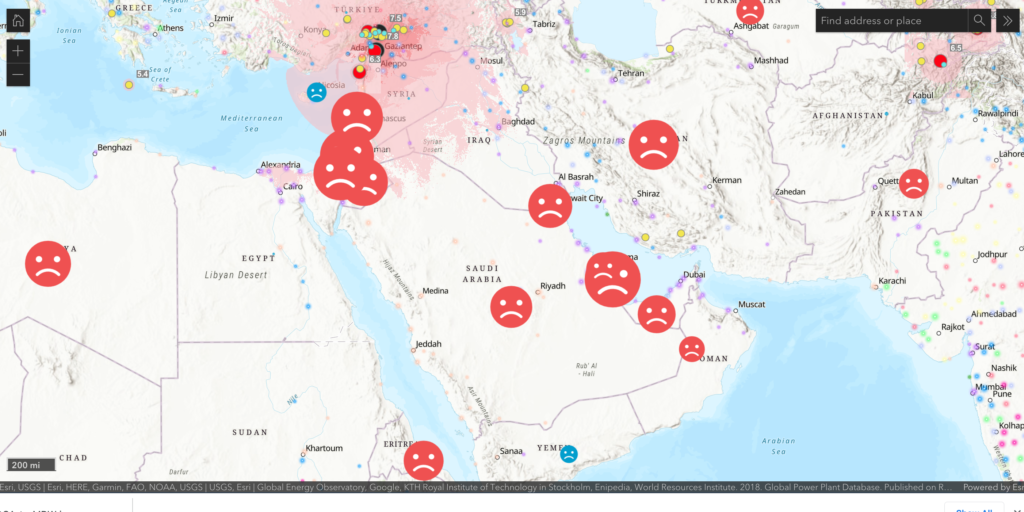
Click here to interact with water stressed countries map.
<iframe src=https://www.arcgis.com/apps/instant/sidebar/index.html?appid=a27cbeefad0742f492fd3c855000e027&locale=en width=”400″ height=”600″ frameborder=”0″ style=”border:0″ allowfullscreen>iFrames are not supported on this page.</iframe
Top 33 Water-Stressed Countries: 2040
| Rank | Name | All Sectors |
|---|---|---|
| 1 | Bahrain | 5.00 |
| 1 | Kuwait | 5.00 |
| 1 | Qatar | 5.00 |
| 1 | San Marino | 5.00 |
| 1 | Singapore | 5.00 |
| 1 | United Arab Emirates | 5.00 |
| 1 | Palestine | 5.00 |
| 8 | Israel | 5.00 |
| 9 | Saudi Arabia | 4.99 |
| 10 | Oman | 4.97 |
| 11 | Lebanon | 4.97 |
| 12 | Kyrgyzstan | 4.93 |
| 13 | Iran | 4.91 |
| 14 | Jordan | 4.86 |
| 15 | Libya | 4.77 |
| 16 | Yemen | 4.74 |
| 17 | Macedonia | 4.70 |
| 18 | Azerbaijan | 4.69 |
| 19 | Morocco | 4.68 |
| 20 | Kazakhstan | 4.66 |
| 21 | Iraq | 4.66 |
| 22 | Armenia | 4.60 |
| 23 | Pakistan | 4.48 |
| 24 | Chile | 4.45 |
| 25 | Syria | 4.44 |
| 26 | Turkmenistan | 4.30 |
| 27 | Turkey | 4.27 |
| 28 | Greece | 4.23 |
| 29 | Uzbekistan | 4.19 |
| 30 | Algeria | 4.17 |
| 31 | Afghanistan | 4.12 |
| 32 | Spain | 4.07 |
| 33 | Tunisia | 4.06 |
Call to Action: Donate $50 to a water stressed Country in SWANA Each Night
Country Stats and Charity
- April 18: Turkiye
Turkiye’s Falkenmark Indicator measures water availability per person as 1,346 cubic meters in 2020 and thereby ranks as a high water-stressed country.
Water availability per person in Turkey is expected to drop even further this year, to 1,200 cubic meters, which is one reason the UN Intergovernmental Panel on Climate Change estimates that 60% of Turkey’s land area is prone to desertification.
A Water Crisis of Turkey’s Own Making by Alexandra De Cramer
- April 17: Azerbaijan
Azerbaijan ranked ‘Extremely High’ for water-stress. As such, the UN Development Program warned that unless water-stressed Azerbaijan implement water shortage solutions, Azeris risk losing 23 percent of its water resources by 2050. Although Azerbaijan is not the most water-stressed country within the 30 SWANA countries, its water situation in the south exemplifies the transboundary water conflict dimension of Nagorno Karabakh–exacerbated by climate change.
- April 16: South Sudan
Since the devastating East African drought of 2011, Fifty-nine percent of the population in South Sudan lacks access to safe water. Given that 97% of South Sudan’s water is used for agriculture–an industry that employees 80% of the population–the climate change effects in South Sudan have left a dual water and food security crisis. Consequently, the joint IPC report by the FAO, the UN, and WHO projects an acute food and water crisis this coming summer in an addition 11 districts leaving 1.4 million children under 5 to suffer from acute malnutrition in 2023.* Donate to Drop4Drop’s #CleanWaterforAll campaign and Islamic Relief.
- April 15: Afghanistan
According to a United Nations International Children’s Emergency Fund (UNICEF) household survey conducted in December 2022: 79 percent of Afghanistan homes suffer from water shortages.
- April 14: Qatar
As Qatar’s population grew, its domestic water consumption doubled between 2010 to 2020. Qatar’s water use is estimated at over 450 litres per person per day, Qatar has one of the highest domestic water consumption rates in the world. Given that Qataris do not pay for water utilities, water scarcity is compounded. Like other petro-monarchies, the World Bank has urged Qatar to opt for less expensive means of obtaining water through treated wastewater, rather than desalination techniques.
- April 13: Morocco
Given that Morocco receives 600 cubic meters of water annually per capita, Morocco is already well below the water scarcity threshold of 1,700 cubic meters per capita per year. Given Morocco’s water-stressed status, it has recorded about three drought seasons every decade. Consequently, Sowit leverages technology and data provided Moroccan farmers, to better manager irrigation mechanisms.
- April 12: Iran
By 2040, Iran will join the top 15 water-stressed countries in part because about 63% of the country’s dams are empty, according to official statistics reported by Iran’s Water Resource Management Agency. More on the United Nations’ 6th Sustainable Development Goal: Water Access and the “Right to Water” for Iran regardless of politics.
Water-stressed related migration in Iran has increased. In the last 50 years, Iran has experienced 10 droughts. Iran scholar, Banafshe Keynoush outlines the parallel developments of urbanization and climate-change impacts and writes:
Water-induced migration is a major challenge for Iran, a country in which 75% of its nearly 88 million people live on less than 40% of its land, mostly in the water-rich areas of the west and in the north.
Banafsheh Keynoush, Middle East Institute “Iran’s Growing Climate Crisis” January 2023

The above image shows Iran’s land mass in relation to the U.S. Imagine if 60 million people lived in–or suddenly migrated towards– half of the Midwest. Iran The hacking group Black Reward circulated what they claim is a leaked document from a news agency tied to Iran’s Islamic Revolutionary Guard Corps, in which officials express concern that water shortages could spark demonstrations in several provinces, according to Time Magazine’s November issue.
- April 11: Tunisia
Tunisia has been experiencing a three-year long drought. As such, Tunisian dams recorded a decrease in capacity of around of 1 billion cubic meters due to scarcity of rain from September 2022 to mid-March 2023.
- April 10: Iraq Part 2
The Tigris and Euphrates river serve asIraq’s two main sources of water, but they are both decreasing at an alarming rate because of man-made and natural causes: the construction of upstream dams and a prolonged drought. Specifically,water flows from the Euphrates and Tigris Rivers have decreased by 30% since the 1980’s.
- April 9: Mauritania
If a drought in Mauritania intensifies by 10 percentage points, then average Mauritania’s annual per capita growth could fall by around 0.8 to 1 percentage points, according to an International Monetary Fund study.
- April 8: Oman
For the 2040 water-stressed projections, Oman ranked 10th globally. As such, the Sultanate of Oman established Oman Water Society to map hydrogeological elements.
- April 7: UAE
With a 1,780 percent water stress level, the United Arab Emirates leads in water desalination by providing 48 percent of the water in the Southwest Asian & North African region. This means that the annual water withdrawal is 17.8 times the annual water supply from renewable sources: demand exceeds renewable water supply.
- April 6: Sudan
Given the ‘threat multiplier’ effect of climate change, 17.3 out of 46.9 million people in Sudan lack access to basic level drinking water, according to the 2022 report from the United Nations Children’s Fund. As such, children are the most vulnerable due to “Extremely High” water-stress rating: only 43% of schools were able to provide safe drinking water in 2021.
- April 5: Bahrain
As an extremely high water-stressed country, Bahrain built five desalination plants. For example, the Al-Hid plant was part of a $360 million dollar construction project. Although they are a solution to the water scarcity problem, it is also environmentally taxing: desalination plants use twice as much as energy methods to reuse sewage water.
- April 4: Libya
Libya is in the top six most water stressed countries globally (ranked 4th), according to the World Resources Institute and the FAO.
- April 3: Lebanon
Only 48 percent of Lebanon’s population has access to safely managed water, according to the Joint World Health Organization (WHO) and UNICEF Programme.
- April 2: Egypt
Egypt is trying to address its ‘water poverty’ dilemma by constructing the Green River project, which is an artificial body of water within the New Capital project estimated to support 6.5 million people. Last year, Egypt chaired the Climate Conference of the Parties (COP27) to reach zero carbon emissions worldwide, amidst accusations of “greenwashing” its record.
- April 1: Pakistan
According to the “Water Crisis in Pakistan: Manifestation, Causes and the Way Forward,” by the Pakistan Institute of Development Economics (PIDE): Pakistan ranks 14 out of 17 “extremely high water risk” countries in the world. More than 80 percent of the country’s population faces “severe water scarcity.” Water availability in Pakistan has plummeted from 5,229 cubic meters per inhabitant in 1962 to just 1,187 in 2017. Here are some water projects to consider supporting.
- March 31: Yemen
Despite Oxfam implementing three solar-powered water projects in the remote district of Al-Hashwah, half of Yemen’s population are without access to safe water.
- March 30: Saudi Arabia
Saudi Arabia’s Deputy Minister Deputy for Water at the Ministry of Environment, Water and Agriculture claims that “Saudi Arabia is on track to achieve the United Nations Sustainable Development Goals (SDG) by 2030” because they developed a National Water Strategy. We shall see.
- March 29: Iraq
According to 2017 water data from the United Nations Population Division, Iraq relied on external water sources for 61 percent of its agricultural and municipal needs.
- March 28: Algeria
Algeria’s Prime Minister Aïmene Benabderrahmane created a new agency to push the implementation of the seawater desalination policy in Algeria. The agency’s goal for seawater desalination is to cover 60% of Algeria’s drinking water needs by 2030.
- March 27: Kenya
In Kenya 28 million of 59 million of its people lack access to safe water. Kenya is the site for a water credit program pioneered by Water.org as another remedy towards water scarcity. Water Is Life program focuses on traditional solutions, such as providing filters and water pumps.
“Sudan – known as the food basket of the Middle East – is agriculturally based. So when they look at water security, they’re looking at the issue from a food security element.” – Lama El Hatow to Middle East Institute on World Water Day.
- March 26: Eritrea
Eritrea between 26-50% have access to water.
- March 24 & 25: Palestine
Palestine and Israel rank 2nd as “Extremely High” in water stressed countries. | Support Islamic Relief
- March 23: Syria
Currently, only four of the eight turbines at the Tabqa dam are working due to a water shortage. | Source: Atlantic Council | Support: Syria Relief & Development & SAMS
- March 22: Jordan
Water availability is just 145 m 3 per person per year – a figure that is projected to drop to just 91 m 3 by 2025. | Source: Fanack Water
Technologies
- Agrotech: SOWIT is a small to medium enterprise that combined the power of big data agriculture, telemetry (#Remote-sensing data on weather and land) with data science to develop a tool leveraging #Agronomy and #AI to optimize African farmers’ inputs & yields. Sowit was co-founded by Hamza Rkha Chaham and featured at the IMF-World Bank Spring Meeting and can be reproduced throughout Africa and Southwest Asia region with arid climate to get ahead of water-stressed conditions. Last year, Sowit participated in the Grand Challenge Annual Meeting organized by the Gates Foundation & the EU Commission. (Photo Source: Sowit accessed on 4/13/23 https://www.sowit.fr/2022/05/26/modern-technologies-for-irrigation-management/)

- Water Desalination Facilities: Since the early 1970’s, the GCC Countries have constructed a large number of desalination facilities to address severe freshwater shortages. However, these facilities are costly compared to other conventional water resources in terms of finance and environmental costs.According to the installed cost of desalination plants is approximately $1m for every 1,000 cubic meters per day of installed capacity.
- Hydrogeological mapping, like Oman’s comprehensive database, captures data for wells such as well identification number, coordinates, total depth of wells, water level, height above sea level, depth of refinery pipes, salinity rate, productivity, hydraulic characteristics of the aquifer, type of geological formation of the aquifer, and this database is linked to the geographic information system.





